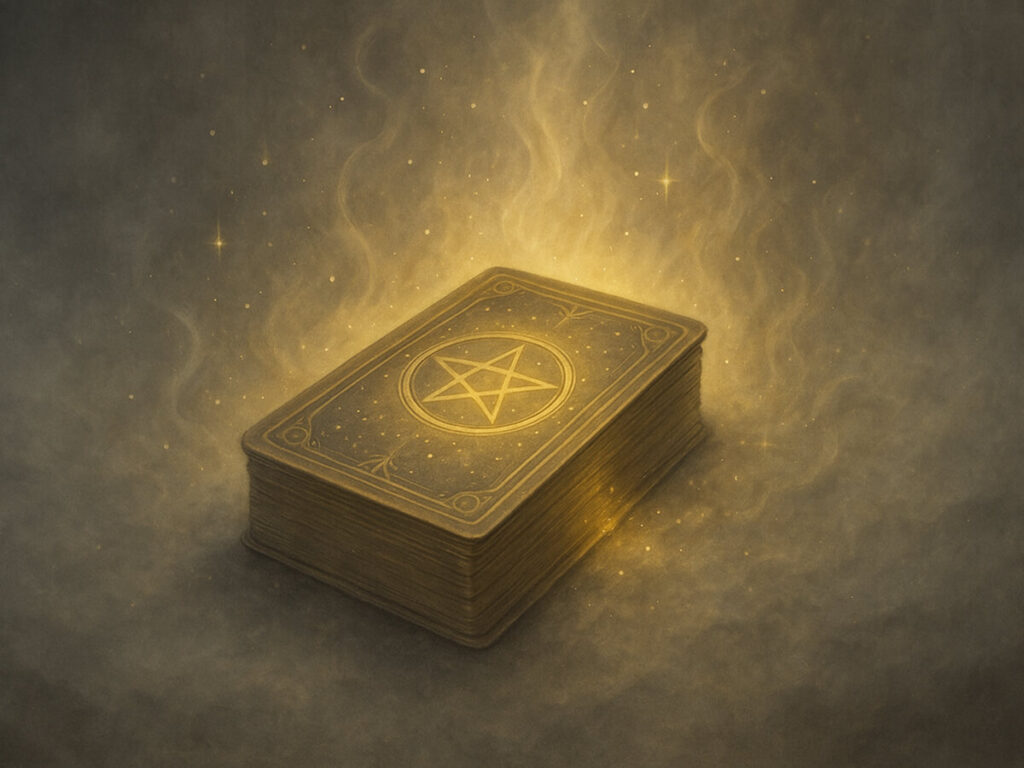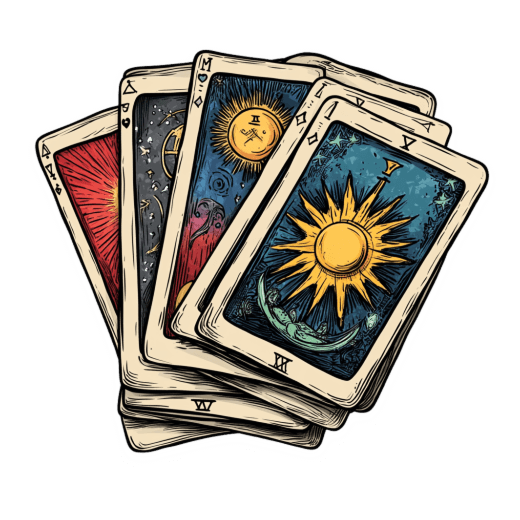Healing from Past Trauma Using Tarot Cards


Table of Contents
Did you know that 70% of adults in the U.S. have experienced some type of traumatic event in their lives? This striking statistic from the National Council for Mental Wellbeing reminds us just how common trauma is in our everyday existence. I’ve spent over four decades working with the tarot as a healing modality, and I’ve witnessed firsthand how these ancient cards can illuminate the darkest corners of our psyche.
When I first began exploring tarot for trauma healing back in the early 1980s, there were few resources connecting these powerful symbols to psychological healing. Today in 2025, the landscape has completely transformed. Therapists, counselors, and healing practitioners have embraced tarot as a complementary tool for processing difficult experiences and emotional wounds.
My own journey with tarot healing began after a particularly challenging period in my life. I found that the imagery spoke to parts of me that talk therapy couldn’t reach. The cards provided a language for experiences I couldn’t verbalize, giving form to formless pain. I’m not suggesting tarot replaces professional mental health support—I’ve maintained my own therapy practice throughout my career—but rather that it offers a unique pathway to understanding our inner landscape.
In this guide, I’ll share the techniques and approaches I’ve refined over decades of practice, helping thousands navigate their way through past trauma using the wisdom of the tarot. Whether you’re new to tarot or an experienced reader seeking to deepen your healing practice, you’ll find practical guidance for using these powerful archetypal images as mirrors for trauma recovery and integration.
Understanding the Healing Power of Tarot for Trauma
The first time I used tarot specifically for trauma work, I was honestly surprised by how effective it was. I remember sitting with a client who had experienced childhood neglect, and when The Five of Cups appeared, tears began streaming down her face. “That’s exactly how I feel,” she whispered. The image of the figure gazing at spilled cups while failing to notice the two that remained upright perfectly captured her fixation on loss.
What makes tarot so powerful for trauma healing is its ability to externalize our internal experiences. Trauma often defies logical expression—it lives in our bodies, emotions, and subconscious. The symbolic language of tarot bypasses our analytical mind and speaks directly to these deeper aspects of ourselves.
According to Dr. Bessel van der Kolk, author of “The Body Keeps the Score,” trauma disrupts our ability to integrate experiences into a coherent narrative. Tarot cards provide visual metaphors that help reconstruct these fragmented narratives. When we see aspects of our experience reflected in the cards, it creates distance that allows for safer exploration.
I’ve found the most effective approach combines psychological understanding with intuitive card reading. For instance, when working with The Tower card—often feared in readings—I encourage clients to view it as representing the necessary dismantling of old structures built on shaky foundations. This reframing helps them recognize that painful breakdowns often precede meaningful breakthroughs.
One technique I’ve developed involves identifying a card that represents the trauma itself and then pulling additional cards to illuminate aspects of healing. This practice helps create a roadmap for recovery that feels personally meaningful. As one client told me, “Seeing my journey laid out in cards made me realize there was a path forward, even when I couldn’t see it myself.”
It’s important to approach tarot trauma work with tremendous care. I’ve learned—sometimes the hard way—that establishing safety protocols before deep diving is essential. Simple practices like having grounding objects nearby, setting time boundaries, and preparing comfort measures can prevent retraumatization during intense sessions.
The beauty of tarot for trauma healing is that it honors the individual’s pace and readiness. The cards meet you where you are, revealing only what you’re prepared to see and process in that moment. I think that’s why, after all these years, I still find them to be such powerful companions on the healing journey.
Essential Tarot Spreads for Trauma Recovery
I’ll never forget the day I created the Shadow Integration spread. It was after a particularly challenging session with a client who struggled to access the wounded parts of herself. We needed something more structured than a general reading but gentler than diving straight into the darkness. That afternoon, I sketched out a five-card pattern that has since helped hundreds navigate their trauma recovery.
When designing spreads for trauma work, I’ve found that simplicity often trumps complexity. Traumatized systems get overwhelmed easily, so I typically recommend beginning with three to five card layouts. Here are several spreads I’ve refined over my decades of practice:
The Healing Journey spread uses three cards positioned in a horizontal line. The first represents “Where I’ve Been,” acknowledging the trauma without dwelling there. The middle card shows “Where I Am Now,” honoring current coping strategies and progress. The third reveals “Where I’m Moving Toward,” offering hope and direction. What makes this spread particularly effective is its narrative structure—it reminds us that trauma is part of our story, not our entire identity.
For deeper shadow work, I often use the Shadow Aspect spread, which includes positions for “The Wound,” “The Protective Response,” “The Hidden Gift,” and “Integration.” This arrangement helps uncover not just the trauma itself but also the adaptive mechanisms developed in response and the unexpected strengths that emerged from surviving difficulty.
My Inner Child Healing spread has perhaps been the most transformative for clients with childhood trauma. It includes positions for “The Child Self,” “What the Child Needed,” “What the Child Received Instead,” “The Adult Protector,” and “Reconciliation.” I’ve watched people weep upon seeing The Five of Pentacles in the child position, finally acknowledging their younger self’s experience of abandonment or neglect.
When using these spreads, I encourage a contemplative approach. Rather than rushing through interpretations, sit with each card for a full minute, noting bodily sensations and emotional responses before analyzing meanings. This somatic awareness creates an integrated healing experience that addresses trauma’s physical imprints.
I’ve learned that timing matters tremendously in trauma recovery work. Some days, clients need gentle, affirming spreads that emphasize strength and resilience. Other days, they’re ready to peer into shadowy corners. I always check in before deciding which spread to use, asking, “What does your system need today—comfort or exploration?”
The most powerful moments often come when clients create their own spreads based on intuitive understanding of their healing journey. There’s something profoundly empowering about designing the framework through which you’ll examine your experiences—it places agency firmly back in hands that trauma may have rendered helpless.
Key Tarot Cards That Facilitate Emotional Release
In my 40+ years working with tarot for trauma healing, I’ve noticed certain cards consistently facilitate profound emotional breakthroughs. The Tower is perhaps the most dramatic of these catalysts. I remember a session with a client who had suppressed memories of childhood abuse. When The Tower appeared, she physically shuddered and then described images she hadn’t consciously recalled in decades. The card’s imagery of sudden, catastrophic breakdown mirrored her internal experience so perfectly that it created a safe container for remembering.
The Death card, despite its intimidating appearance, often brings tremendous relief in trauma work. It represents the necessary endings that precede new beginnings. One gentleman I worked with drew Death while processing grief over his father’s suicide. Initially frightened, he gradually recognized the card was acknowledging both the literal death he was mourning and the death of his former identity as he integrated this painful experience. “I’m not who I was before this happened,” he said, “and maybe that’s not entirely bad.”
The Star frequently appears during healing breakthroughs, symbolizing hope emerging after devastation. Its quiet imagery of a woman kneeling by water under the night sky speaks to the gentle, private nature of much trauma recovery. One client kept The Star card on her nightstand during months of processing sexual assault trauma. “It reminds me there’s still beauty in the world,” she told me, “even when I can’t feel it yet.”
For addressing childhood wounds specifically, I’ve found The Sun and The Six of Cups particularly potent. The Sun’s imagery of a child on horseback represents the joyful, authentic self that trauma often buries. The Six of Cups, with its nostalgic scenes of children exchanging flowers, helps access memories of innocence and tenderness that create healing contrast to traumatic experiences.
When working with complex trauma, the Hanged Man frequently emerges, representing the suspended animation many survivors describe—feeling stuck between the past and a future they can’t yet imagine. This card validates the liminal space of healing while suggesting that a shift in perspective might illuminate new pathways forward.
I’ve observed that court cards often represent protective aspects developed in response to trauma. The Queen of Swords, with her clear boundaries and intellectual distance from emotion, commonly appears for those who’ve learned to dissociate for protection. Acknowledging these defensive strategies with compassion rather than judgment is crucial for integration work.
The Ten of Swords, though graphically disturbing, often marks a turning point in trauma recovery. Its depiction of complete surrender sometimes helps clients recognize when they’re ready to stop fighting against what happened and begin the process of acceptance and rebuilding.
I never interpret these cards rigidly during trauma work. Instead, I invite clients to describe what they see and feel in response to the imagery. Sometimes their personal associations diverge dramatically from traditional meanings, and honoring these individual responses is essential for authentic healing. The cards that facilitate your emotional release might be entirely different from those that help someone else.
Practical Techniques for Tarot Trauma Integration
The first time I combined journaling with tarot for trauma work was purely intuitive. A client was struggling to verbalize her feelings about a card that clearly triggered something deep. “Just write whatever comes,” I suggested, handing her a notebook. Twenty minutes later, she’d filled three pages with insights she hadn’t been able to access through conversation alone. That spontaneous experiment became the foundation for what I now call Dialogic Card Journaling.
This technique involves writing a conversation between yourself and a significant card from your reading. I recommend beginning with “Hello [card name], what do you want me to know today?” Then allow the card to “respond” through your writing. This practice bypasses analytical thinking and accesses the intuitive wisdom needed for trauma healing. One client’s dialogue with the Three of Swords revealed childhood grief she’d never permitted herself to acknowledge.
Embodiment practices form another cornerstone of effective tarot trauma integration. Our bodies store traumatic memories in sensation, tension, and movement patterns. When a card resonates with or triggers a client, I might ask, “Where do you feel this card in your body?” and then guide them through gentle somatic awareness. Sometimes I’ll invite them to physically embody the card’s posture, noticing what emotions or memories arise from taking that shape.
I’ve developed a technique called “Card-Prompted Breathwork” that’s particularly helpful during intense sessions. When difficult emotions surface, we select a supportive card (often The Star or Temperance) and create a simple breathing pattern inspired by its imagery. For The Star, we breathe in while imagining drawing down light from the stars, and exhale while visualizing that light spreading through areas of tension or pain.
Creating personalized affirmations from supportive cards provides another powerful integration tool. A client struggling with shame after sexual assault pulled the Queen of Wands in a reading. We crafted the affirmation “Like the Queen of Wands, I reclaim my right to confidence and joy in my body.” She reported that repeating this phrase while visualizing the card helped counter intrusive thoughts of worthlessness.
For clients who find traditional journaling challenging, I recommend visual responses to cards. This might involve collaging images that relate to a significant card’s theme, creating a simple sketch inspired by the card, or even photographing objects or scenes in their environment that echo the card’s energy. These creative processes engage different neural pathways than verbal processing, sometimes unlocking insights that words cannot reach.
I’ve found that consistent, brief daily practices often prove more effective than occasional deep dives. One approach I suggest is selecting a card that represents healing and spending just two minutes each morning contemplating it before beginning the day. This ritual creates a container for ongoing integration work between more intensive sessions.
Whatever techniques you explore, remember that trauma healing isn’t linear. There will be days when previously helpful practices suddenly feel triggering. That’s not failure—it’s information about your current needs. The beauty of having multiple integration tools is the flexibility to meet yourself exactly where you are in each moment of the journey.
Creating a Safe Container for Tarot Trauma Work
I learned about the crucial importance of creating safe containers for tarot trauma work the hard way. Early in my practice, I conducted an intense reading for a client without proper preparation or closure. Though the session yielded powerful insights, she called the next day describing nightmares and anxiety. That experience transformed my approach completely. Now I understand that safety isn’t just a preliminary consideration—it’s the foundation that makes deep healing possible.
Before beginning any trauma-focused tarot work, I establish clear physical boundaries. This means selecting a space that feels secure and private, removing potential interruptions, and ensuring basic comfort needs are met. I recommend having grounding objects nearby—perhaps a smooth stone to hold, a comforting scent, or a soft blanket. These sensory anchors help maintain present-moment awareness when exploring difficult territory.
I always begin sessions with a verbal agreement acknowledging that either of us can pause or redirect if the work becomes overwhelming. This shared understanding creates psychological safety, reminding clients they retain agency throughout the process. One simple phrase I teach is “yellow light,” which signals “I need to slow down” without completely stopping the exploration.
Establishing energetic boundaries before trauma-focused readings is equally important. I use a simple visualization where we imagine creating a container that will hold only what we’re ready to process today, leaving the rest for future work. This helps prevent the common experience of feeling flooded by too much traumatic material surfacing at once.
Time boundaries provide crucial structure for trauma work. I never schedule trauma-focused readings without ensuring adequate integration time afterward. This might mean planning a gentle activity following the session or simply building in transition time before returning to regular responsibilities. I’ve found that 15-30 minutes of intentional grounding after intense readings significantly reduces aftereffects.
I’m particularly careful about closure rituals. Leaving a trauma-focused session without proper containment can result in emotional spillover affecting the rest of the day or triggering nightmares. Simple practices like shuffling the cards back into the deck (symbolically returning the energy), writing a brief reflection, or performing a physical gesture of completion help signal to both conscious and subconscious mind that the exploration space is now closing.
Sometimes I incorporate protective cards into trauma readings. Placing The Emperor or The Empress at the edge of a spread can represent wise adult presence watching over the exploration. For clients with religious or spiritual frameworks, cards like The Hierophant or The High Priestess might represent divine protection during vulnerable work.
Perhaps most importantly, I maintain clear boundaries around when tarot is and isn’t appropriate for trauma processing. If a client shows signs of significant dissociation, suicidal ideation, or overwhelming emotional flooding, I refer them to mental health professionals before continuing our tarot work. Ethical practice means recognizing that cards complement but don’t replace appropriate clinical care for trauma.
The safe container we create isn’t meant to avoid discomfort—healing often requires facing difficult truths. Rather, it ensures that when we touch painful places, we do so with resources, awareness, and choice rather than through retraumatizing overwhelm. As one client beautifully expressed it, “The boundaries don’t limit the depth of the work; they make it possible to go deeper because I know I can find my way back.”
Combining Tarot with Other Trauma Healing Modalities
Throughout my decades of practice, I’ve discovered that tarot’s healing potential magnifies exponentially when combined with complementary modalities. This integrative approach addresses trauma’s multidimensional nature—psychological, physical, emotional, and spiritual. I think of it as creating a healing ecosystem where different practices support and enhance each other.
My collaboration with a somatic experiencing practitioner revolutionized my understanding of how tarot can support physiological trauma release. We developed sessions where clients would identify sensations arising while viewing specific cards, then use somatic techniques to process those bodily responses. One client with accident trauma found that contemplating The Chariot card triggered tension in her shoulders. Through gentle somatic tracking, she released physical constrictions that talk therapy alone hadn’t resolved.
Art therapy pairs beautifully with tarot for accessing preverbal or deeply embedded trauma. I often invite clients to create artistic responses to significant cards from their readings. A woman processing childhood abandonment created a powerful mixed-media piece inspired by The Five of Pentacles, incorporating torn fabric and small hidden treasures. The creative process allowed her to externalize and transform feelings she’d struggled to verbalize for years.
I’ve found mindfulness practices tremendously enhance tarot’s trauma healing potential. Simple techniques like pausing to track breath and bodily sensations between card pulls helps maintain present moment awareness, preventing the dissociation that often accompanies trauma exploration. One particular approach involves mindfully scanning the body while holding a question, noting which areas respond before even drawing cards. This somatic awareness frequently guides more targeted readings.
For clients with spiritual frameworks, incorporating elements of their faith tradition alongside tarot creates powerful healing synergy. A Christian client comfortable using tarot symbolically found that reading passages from Psalms that resonated with certain cards deepened her connection to both the reading and her faith practice. This integration helped her reconcile religious teachings with the trauma healing journey.
Movement modalities offer another valuable complement to tarot work. After particularly significant readings, I sometimes suggest embodiment practices where clients physically express the energy of healing cards. One man working through grief found that moving his body in ways inspired by The Sun card—arms raised and open—produced emotional release that static contemplation hadn’t accessed.
I’ve partnered with several trauma-informed therapists who incorporate tarot as an adjunct to traditional modalities like EMDR or Internal Family Systems therapy. One therapist uses tarot to help clients identify and dialogue with different “parts” of themselves, finding that the visual symbolism helps externalize and communicate with protective aspects that developed in response to trauma.
Breathwork techniques paired with specific cards create another powerful integration. Simple practices like box breathing while focusing on The Star or The Temperance card help regulate the nervous system during emotional processing. I teach clients these card-anchored breathing techniques for use between sessions when triggered memories arise.
Whatever complementary modalities you explore, I recommend maintaining a curious, experimental approach. What works beautifully for one person might feel disconnected for another. I encourage clients to notice which combinations create that distinctive “click” of resonance—a feeling that multiple levels of their being are engaged in the healing process.
The most effective integrative approaches honor both structure and intuition. While I might suggest certain combinations based on experience, I always prioritize the client’s felt sense of what their system needs. This collaborative exploration embodies what I believe is the essence of healing work—honoring each person’s innate wisdom about their unique path to wholeness.
The Ongoing Journey of Trauma Recovery Through Tarot
As we come to the end of our exploration into tarot healing for past trauma, I’m reminded of something a client once told me: “The cards didn’t heal me—they showed me I already had everything I needed to heal myself.” After four decades of witnessing countless trauma recovery journeys, I believe this wisdom captures the essence of tarot’s healing potential.
The ancient symbols and archetypal energies within these 78 cards offer mirrors that reflect both our wounds and our capacity for transformation. They provide a visual language for experiences that often defy words, creating bridges between conscious awareness and the deeper wisdom of the psyche where true healing occurs.
Throughout this guide, we’ve explored practical techniques, spreads, and approaches for using tarot as a trauma recovery tool. But perhaps the most important element I can emphasize is patience with your process. Healing rarely follows a linear path—it spirals, circles back, leaps forward unexpectedly, and sometimes seems to stall completely. The cards honor this natural rhythm, meeting you exactly where you are without judgment or expectation.
If you’re beginning this journey, remember that small, consistent steps often prove more sustainable than dramatic deep dives. Perhaps start with simply selecting a card that represents how you wish to feel and spending a few moments with it each morning. Or experiment with the journaling techniques we’ve discussed, allowing yourself to write without censorship or criticism.
For those supporting others through trauma recovery, I encourage you to continue developing your own self-care practices. This work, while profoundly rewarding, can activate our own unresolved experiences. Regular supervision, personal therapy, and energetic clearing routines aren’t luxuries but essential foundations for ethical practice.
As we move through 2025 and beyond, I’m heartened to see increasing recognition of tarot’s value as a complementary healing modality. Research in psychoneuroimmunology and embodied cognition continues to validate what practitioners have long observed—that symbolic work creates measurable changes in our neurological and immune functioning.
I invite you to approach this work with both reverence for its power and a spirit of gentle experimentation. Your intuition will guide you toward the techniques, cards, and practices that resonate most deeply with your unique healing journey. Trust that wisdom, moving at a pace that feels sustainable for your system.
May the cards illuminate your path toward integration, helping you reclaim the parts of yourself that trauma may have fragmented or hidden from view. Remember that healing doesn’t mean erasing difficult experiences but rather weaving them into the larger tapestry of a life that includes joy, connection, and meaning alongside acknowledgment of pain.
The journey continues, one card at a time.
Frequently Asked Questions
Is using tarot for trauma healing scientifically supported?
While direct research on tarot for trauma is limited, studies on expressive arts therapies and symbolic processing show promising results for trauma recovery. The psychological mechanisms at work—externalization, projection, narrative reconstruction, and metaphorical thinking—are well-documented therapeutic processes. As Dr. Judith Herman notes in “Trauma and Recovery,” symbolic representation often accesses trauma memories stored in non-verbal parts of the brain more effectively than direct verbal processing alone.
Can tarot readings trigger trauma responses?
Yes, this is possible. Certain imagery or interpretations might activate trauma responses, which is why establishing safety protocols before readings is essential. I recommend starting with gentler decks if you’re concerned about triggering imagery, working with a trauma-informed reader if possible, and having grounding resources readily available. Remember that triggering doesn’t necessarily indicate harm—sometimes it signals an opportunity for processing with appropriate support.
Do I need to believe in divination for tarot to help with trauma healing?
Not at all. While some approach tarot from a spiritual perspective, many find it valuable as a psychological tool regardless of beliefs about divination. Carl Jung viewed symbolic systems like tarot as accessing collective unconscious material, while modern therapists might frame it as a projective technique similar to inkblot tests. The cards’ effectiveness for trauma work relates more to their rich imagery and archetypal content than any particular belief system.
How do I know if I’m ready to use tarot for trauma work?
Readiness often involves having adequate stability in your daily life, some existing coping strategies, and ideally, professional support. Signs you might be ready include curiosity rather than dread about exploring your experiences, the ability to self-regulate when emotions arise, and sufficient emotional resources that you’re not feeling constantly overwhelmed. If you’re unsure, consider starting with gentler practices like selecting a single supportive card daily before attempting deeper explorations.
Can tarot replace therapy for trauma recovery?
Tarot works best as a complement to, not replacement for, appropriate clinical care for significant trauma. While cards provide valuable insights and perspectives, trauma recovery often requires the relational healing, specialized techniques, and safety monitoring that trained mental health professionals provide. Many therapists are increasingly open to clients incorporating tarot as a supplemental practice when appropriate boundaries are maintained.
How often should I do trauma-focused tarot readings?
This varies greatly by individual, but I generally recommend quality over quantity. Deep trauma-focused readings might be appropriate once every few weeks, with gentler supportive practices in between. Pay attention to your energy levels and emotional capacity—if you feel depleted or overwhelmed after readings, you might need more time between sessions or a modified approach. Integration time is as important as the reading itself.
Are some tarot decks better than others for trauma work?
Decks with gentler imagery or specific therapeutic focus can be helpful for trauma work. The Gaian Tarot, Wisdom of the Hidden Realms, and Muse Tarot offer alternatives to decks with potentially triggering imagery. However, personal resonance matters most—the deck that feels most supportive to you is the right choice. Some find that traditional imagery, despite occasional challenging cards, provides the depth needed for significant healing work.
How do I handle it if a reading brings up overwhelming emotions?
First, recognize this as a normal part of trauma processing, not a sign you’re doing something wrong. Implement grounding techniques like deep breathing, physical movement, or sensory awareness (naming five things you can see, four you can touch, etc.). Consider temporarily putting the cards away and returning when you feel more regulated. For persistent overwhelm, consulting a mental health professional is advisable—they can help develop strategies for managing emotional intensity.






